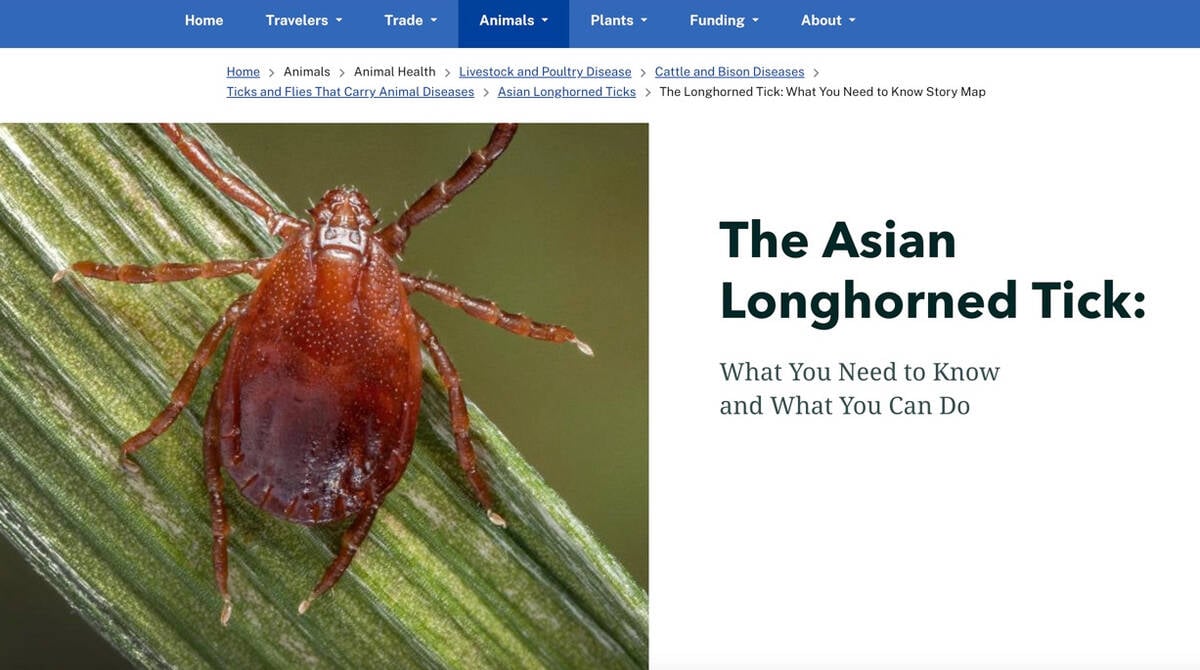I’ve written before in this column about the importance of getting replacement heifers off to a good start.
Establishing reproductive momen-tum is extremely important in heifers because their interval between calving and their first heat after calving is much longer, usually 80 to 100 days for heifers in good body condition.
This puts heifers at a major disadvantage when compared to the typical 50 to 60 days that it takes mature cows to start cycling after calving. As well, poor body condition can put heifers even further behind in the next breeding period.
Read Also

New World screwworm not seen as trade threat
Canadian cattle producers shouldn’t be worried about the New World screwworm, which has become a massive concern for ranchers in Mexico and is threatening the southern United States
Heifers are extremely unlikely to cycle in time to be bred in the next breeding period if this prolonged post-partum period is not accounted for by allowing them to calve earlier.
The extended post-partum interval in heifers is unavoidable and makes it absolutely essential that heifers have a breeding season that starts at least 42 days ahead of the cow breeding season.
It is especially important that we don’t allow heifers to become thin in late gestation. In fact, there are almost no viable options to ensure good reproductive performance if heifers calve in thin body condition because it is difficult to improve body condition in lactating heifers.
An article in the most recent Journal of Animal Science by researchers from the U.S. Meat Animal Research Centre (MARC) at Clay Centre, Nebraska, provides even more evidence of the importance of ensuring heifers achieve good reproductive momentum.
Researchers studied the records of more than 16,000 heifers for longevity and weaning weight data. They also examined data from an additional 2,195 heifers enrolled in the South Dakota Integrated Resource Management project.
They compared the lifetime productivity of first calf heifers that calved in the first 21 days of the calving period to heifers that initially calved in the second or third 21 days of the calving period. The results are remarkable.
Heifers in the MARC herd that calved in the first 21 days were more likely to remain in the herd longer and produce a fifth calf.
Results were not quite as dramatic in the South Dakota herds, where heifers that calved in the first 21 days were more likely to stay in the herd and produce a third calf.
As a result, these heifers had a greater longevity when compared to heifers that calved after the first 21 days of the calving period.
Calving earlier also produces a heavier calf at weaning because it has more time to grow before weaning. However, when the researchers examined the records of these heifers, they were able to demonstrate that the heifers that calved in the first 21 days had calves with heavier unadjusted weaning weights year after year. This trend continued for up to six calvings.
It has been established for many years that heifers need to calve by 24 months of age to achieve maximum lifetime productivity, and that a heifer needs to wean three to five calves in its lifetime to pay for the costs of development. As a result, female longevity is an important trait that contributes to the economic profitability of the cow-calf operation.
The study provides even more evidence that heifers that calve in the first 21 days of the calving period are more likely to remain in the early calving group for their lifetime and are also more likely to wean heavier calves for their first six pregnancies and remain in the herd for a longer period of time.
The study also suggested that producers should perhaps consider breeding extra heifers and make their selections for replacement heifers at pregnancy diagnosis rather than before breeding.
Selecting the heifers that are going to calve in the first 21 days of the calving period will have a significant impact on their lifetime productivity. The heifers that are going to calve later could be sold to other producers with a later calving season.
I’ve often told producers that it would be a good idea to breed their heifers 30 to 45 days before the mature cows to give them time to re-breed in the next breeding period.
However, I’m getting more adamant these days, and now tell my clients that this is an absolutely essential management strategy for their herd.
This latest research would also show that the heifers I want to keep are the ones that calve in the first 21 days of their calving period.
Their longevity and lifetime productivity are going to be significantly better and create a more profitable herd as a result.














